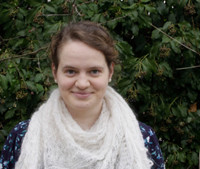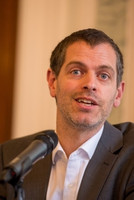
Every Monday, a member of the international academic association ‘UACES’ will address a current topic linked to their research on euradio.
While the commemoration of D-Day on the beaches of Normandy is dominating the news this week, you want to tell us the story of a simple tree.
Yes, it’s a rather modest little maple tree, only 28 years old, and it’s located at roughly 12 kilometres d’Omaha Beach, where the main commemoration festivities take place. The tree is planted on the territory of a small village called La Cambe. Have you ever heard of La Cambe?
I’m afraid I haven’t.
That’s understandable. La Cambe has only 546 inhabitants. But these are only the ones who are alive. They cohabitate with over 21,000 German soldiers buried in the war cemetery that covers seven hectares of their community land.
In the mid-1990s, when the department of Calvados extended the National Road number 13 between Caen and Cherbourg to a four-lane highway, they needed to deviate it in some places. As a result, the cemetery of La Cambe found itself separated from the main road by a 100-meter-wide patch of land filled with a pile of spoil removed by the road works.
And that’s where your famous maple tree was planted?
That’s correct. The authorities offered the extra square metres to the Volksbund Deutsche Kriegsgräberfürsorge, a long-standing charity organisation tending war graves and identifying the buried all across the continent.
They had two ideas what to do with it: first, create a small information and documentation centre, with an exhibition in three languages. My wife and I volunteered for the translation work and spent some evenings and weekends going through heart-breaking testimonies. And second, they wanted to create a so-called ‘Peace Garden’ made of trees sponsored by individuals or organisations, with the aim of both nicely landscaping the little hill and generating some revenues for their activities.
The price tag for a tree was tentatively fixed at 250 Euros (500 D-Mark at the time). Each tree would have a little green sign attached, with the date and name of the sponsor, and two lines of text. One of my students was perfectly happy to do a summer internship on site carrying out a ‘market study’: with her little questionnaire she simply tested the idea and the price range with the visitors. The echo was overwhelmingly positive, a lot of people wanted to be shortlisted right away. Consequently, the idea was implemented.
That’s a nice story. What does this ‘Peace Garden’ look like today?
On 21 September 1996 the first 21 maple trees were planted. Space was available for a total of 235 trees. As of November, the garden was already completely overbooked, prompting the French authorities to grant the use of another heap hill along the new highway ramp and the small cul-de-sac road between the ramp and the cemetery. By early 1998, the garden was full with 1,127 trees, and at Christmas, my father, who had been a soldier in the 2nd World War and spent three years as prisoner of war in England, informed my wife and me that he had secretly ‘bought’ one of the trees in our name.
So you have your own personal ‘peace tree’ in Normandy!
That’s right. If you drop by, say hello from us. It’s tree number 450.
In the meantime, the exhibition in the small information centre has been remarkably well renewed and updated in 2019, and the cemetery attracts around 100,000 visitors each year.
I think there is a lesson to be drawn from this small, personal story: lasting and meaningful peace cannot be put into place by military victory and political peace treaties alone. It takes a civil society that is willing to engage in this peace building one way or another. As a German citizen, I have profound gratitude towards the people in La Cambe, who have always accepted the presence of these 21,000 graves with calm tolerance. Never a protest, never any vandalism. A small village that never made the headlines, but made a strong statement for reconciliation and peace.
Thank you very much, Albrecht, for sharing this personal story with us!
An interview conducted by Laurence Aubron.






